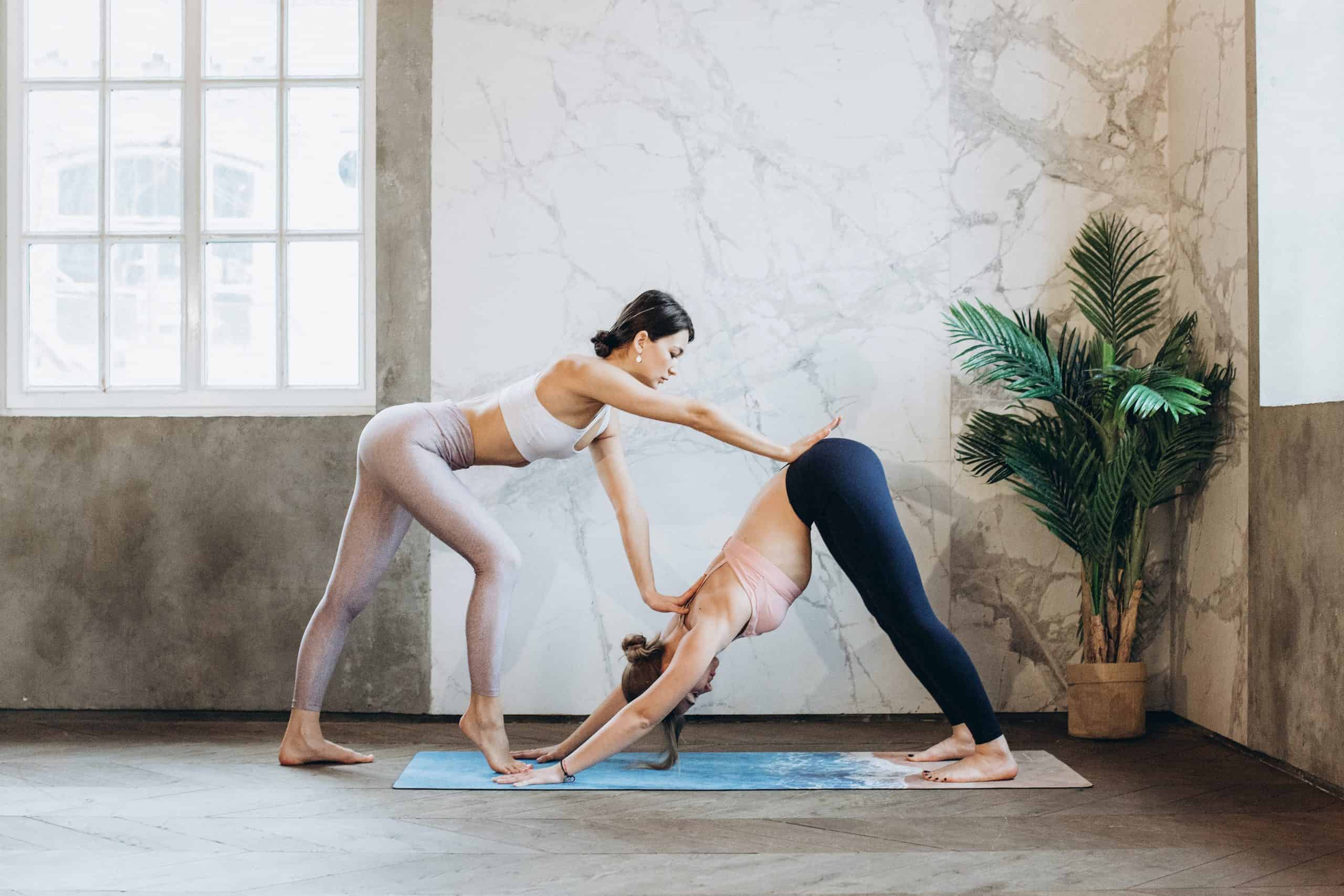In my four years as a New York City yoga teacher, I encountered one thing over and over again: All new yoga students walk in with similar concerns. They’re scared they aren’t flexible enough, scared they’ll make a fool of themselves, scared they won’t be able to follow along, and scared they can’t balance, stand on their heads, or relax. These are totally natural feelings! And you should never let them deter you from showing up for class. The most important thing to remember about yoga is that it’s unlike working out, and it’s also unlike a sport. There is no competition, no goals, no need to “accomplish” anything. Now, that’s not to say you won’t be improving and working toward something—a headstand, balancing on your arms, standing on one leg, etc.—but it’s all seen through the lens of the practice, something you will return to again and again. Yoga is essentially about becoming friends with your body—being attentive to how it feels each day. Showing up is 90 percent of the battle.
Below are answers to 10 commonly asked questions, but this is the one thing I can’t emphasize enough: Tell your teacher if you have an injury or are dealing with an illness. She will often have a lot of students in the room, so if you have any special needs, tell her—preferably before class. The teacher will often stick around after class, too, so you can always find a moment to share your questions and concerns then if you need to.1. What type of class should I start with? Level 1? What’s the difference?
Yes. Always start with the most basic class. Always. (Unless you’re a professional dancer.) Being in shape is great, but it might not help you much when you’re trying out entirely new poses on your mat. Don’t be cocky and don’t be a hero. The last thing you want is to get injured. Advanced classes assume a certain level of knowledge and move much more quickly.
2. I’m not flexible and I definitely can’t touch my toes. Is yoga right for me? Will I be able to keep up in my first class?
“I’m not flexible” and “I can’t touch my toes” are the most common complaints yoga teachers hear from non-yogis and people attending their first classes. It is totally normal. Please don’t let this deter you. Obviously you’re not going to be able to touch your toes any faster if you don’t go to class! And don’t worry about “keeping up.” If you go to a beginner’s class, you should be able to keep up. And if you can’t, who cares? No one is there to judge you. It only gets easier.
3. What should I wear to class?
Don’t obsess about this, and please don’t go out to buy expensive clothes. Anything loose or stretchy will do—sweatpants, leggings, shorts, a tank top, a T-shirt. You don’t want something that’s too loose as it will hide your body (and the teacher needs to be able to see you!) but your attire doesn’t have to be skin tight, either. Most importantly, you need to be able to move. Those are the only requirements. I’d also recommend a sports bra or something wire free as an underwire might bother you in certain poses.
4. What should I bring to class? What if I don’t own a mat or a yoga towel?
Wear appropriate clothing and bring water. The studio should supply a mat and maybe even a towel free or for a small fee.
5. Is my instructor going to touch or adjust me during class?
Maybe. Maybe not. If you don’t want to be touched, feel free to tell the teacher ahead of time. It really depends on how many students are in the room and how your teacher has been trained. If you have an injury, do tell the teacher ahead of time because she will be much more careful when adjusting you.
6. How much and when should I eat prior to class?
Avoid eating a full meal two hours before and after class. A small snack is fine, but a heavy meal might not feel so great when you’re upside down or twisting!
7. How often should I practice to start seeing results?
Yoga isn’t like training for a marathon with set goals you’re ticking off your list. It’s a practice, which means your focus should be on being present each time you come to the mat, not on the end product (ie: “getting” a pose). Obviously, if you stick with it, your experience will change—you will become more flexible and stronger, and poses that were once impossible will start to come with ease!
8. How many classes should I aim to attend weekly?
This is entirely up to you, but it’s great to start with one or two and ramp up from there.
9. If I can’t do a certain pose during class, what do I do? Do I stand on my mat or move to the back of the class?
A good teacher will notice that you’re having difficulty and will come over to help. If the class it too crowded (or you have a crappy teacher!), keep trying, or simply rest in child’s pose. There will always be another chance to try (and maybe find a new teacher?).
10. Is it safe to do yoga while I’m on my period?
Of course! And it might feel really good! In the past, instructors told students not to invert because of something called “retrograde menstruation” (the idea being that inversion causes menstrual blood to flow the wrong way), but the risk posed by inversions isn’t recognized by the medical community. If you don’t want to invert while on your period (a lot of women don’t), there are plenty of modifications you can do instead. The key is, as always, to listen to your body.



